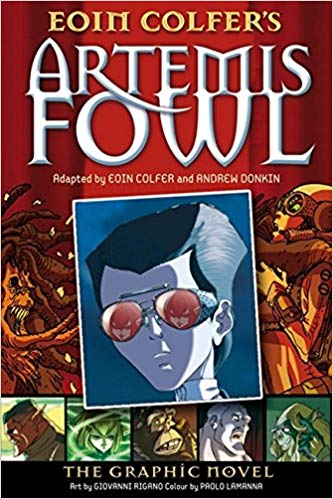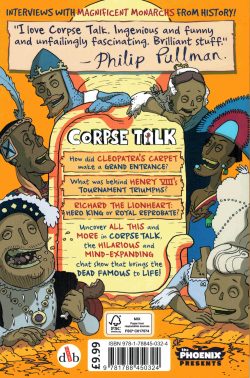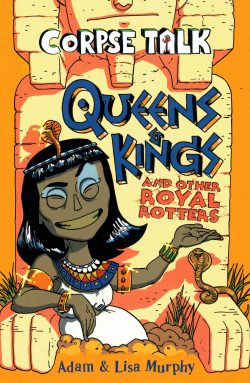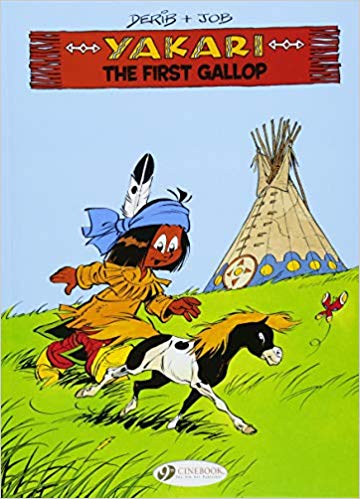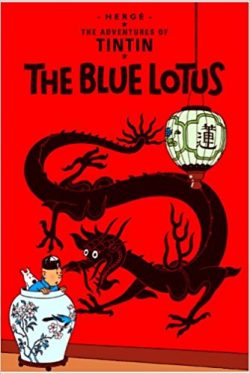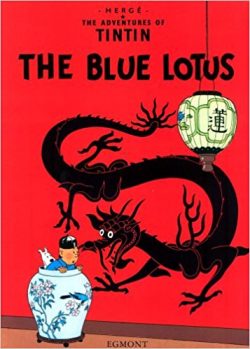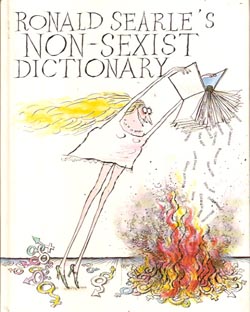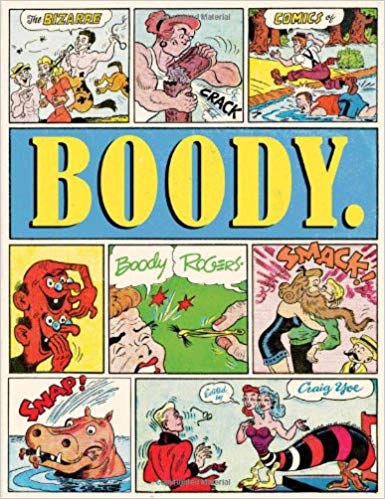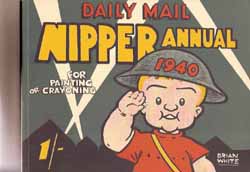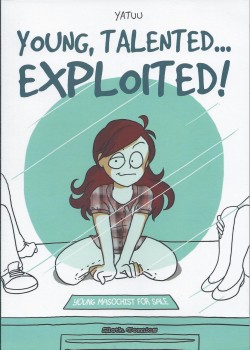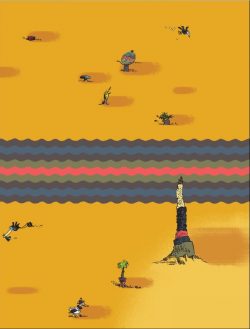
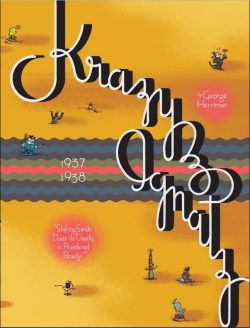
By George Herriman, edited by Bill Blackbeard & Derya Ataker (Fantagraphics Books)
ISBN: 978-1-56097-734-6
In a field positively brimming with magnificent and eternally evergreen achievements, the cartoon strip starring Krazy Kat is arguably the pinnacle of graphic narrative innovation; a singular and hugely influential body of work which shaped the early days of the comics industry and became an undisputed treasure of world literature.
Krazy and Ignatz, as it is dubbed in these gloriously addictive commemorative tomes from Fantagraphics, is a creation which must be appreciated on its own terms. Over the decades the strip developed a unique language – at once both visual and verbal – whilst exploring the immeasurable variety of human experience, foibles and peccadilloes with unfaltering warmth and understanding and without ever offending anybody.
Sadly, however, it did go over the heads and around the hearts of far more than a few…
Krazy Kat was never a strip for dull, slow or unimaginative people who simply won’t or can’t appreciate the complex multi-layered verbal and pictorial whimsy, absurdist philosophy or seamless blending of sardonic slapstick with arcane joshing. It is still the closest thing to pure poesy that narrative art has ever produced.
Herriman was already a successful cartoonist and journalist in 1913 when a cat and mouse who had been noodling about at the edges of his outrageous domestic comedy strip The Dingbat Family/The Family Upstairs graduated to their own feature. Mildly intoxicating and gently scene-stealing, Krazy Kat subsequently debuted in William Randolph Hearst’s New York Evening Journal on Oct 28th 1913 and – largely by dint of the publishing magnate’s enrapt adoration and overpowering direct influence and interference – gradually spread throughout his vast stable of papers.
Although Hearst and a host of the period’s artistic and literary intelligentsia (notably – but not exclusively – Frank Capra, e.e. Cummings, John Alden Carpenter, Gilbert Seldes, Willem de Kooning, H.L. Mencken and latterly Jack Kerouac) all adored the strip, many local and regional editors did not; taking every potentially career-ending opportunity to drop it from the populace-beguiling comics section.
Eventually the feature found a true home and safe haven in the Arts and Drama section of Hearst’s papers. Protected there by the publisher’s doctrinaire patronage and enhanced with the cachet of fulsome colour, the Kat flourished unharmed by editorial interference or fleeting fashion, running generally unmolested until Herriman’s death in April 1944.
The saga’s basic premise is simple: Krazy is an effeminate, dreamy, sensitive and romantic feline of indeterminate gender, hopelessly in love with Ignatz Mouse; a venal everyman, rude, crude, brutal, mendacious and thoroughly scurrilous.
Ignatz is a true unreconstructed male; drinking, stealing, fighting, conniving, constantly neglecting his wife and innumerable children and always responding to Krazy’s genteel advances by clobbering the Kat with a well-aimed brick. These he obtains singly or in bulk from noted local brick-maker Kolin Kelly.
Smitten kitten Krazy always misidentifies these missiles as tokens of equally recondite affection showered upon him/her in the manner of Cupid’s fabled arrows…
The final crucial element completing an anthropomorphic eternal triangle is lawman Offissa Bull Pupp, who is completely besotted with Krazy, professionally aware of the Mouse’s true nature, yet hamstrung by his own amorous timidity and sense of honour from permanently removing his devilish rival for the foolish feline’s affections.
Krazy is, of course, blithely oblivious to the perennially “Friend-Zoned†Pupp’s dilemma…
Secondarily populating the ever-mutable stage are a stunning supporting cast of inspired bit players such as terrifying deliverer of unplanned babies Joe Stork; hobo Bum Bill Bee, unsavoury conman and trickster Don Kiyoti, social climbing busybody Pauline Parrot, self-aggrandizing Walter Cephus Austridge, inscrutable, barely intelligible Chinese mallard Mock Duck, dozy Joe Turtil and a host of other audacious animal crackers all equally capable of stealing the limelight and even supporting their own features.
The exotic, quixotic episodes occur in and around the Painted Desert environs of Coconino (patterned on the artist’s vacation retreat in Coconino County, Arizona) where surreal playfulness and the fluid ambiguity of the flora and landscape are perhaps the most important member of the cast.
The strips themselves are a masterful mélange of unique experimental art, cunningly designed, wildly expressionistic and strongly referencing Navajo art forms whilst graphically utilising sheer unbridled imagination and delightfully evocative lettering and language: alliterative, phonetically and even onomatopoeically joyous with a compelling musical force (“why dollin is you in pritzin?â€, “l’il dahlink†or “I are illoneâ€).
Yet for all that, the adventures are poetic, satirical, timely, timeless, bittersweet, self-referential, fourth-wall bending, eerily idiosyncratic, astonishingly hilarious escapades encompassing every aspect of humour from painfully punning shaggy dog stories to riotous, violent slapstick.
Sometimes Herriman even eschewed his mystical mumblings and arcane argots for the simply sublime grace of a supremely entertaining silent gag in the manner of his beloved Keystone Cops…
There’s been a wealth of Krazy Kat collections since the late 1970s when the strip was first rediscovered by a better-educated, open-minded and far more accepting generation. This delirious tome covers all the strips from 1937-1938 in a comfortably hefty (231 x 15 x 305 mm) softcover edition – and is also available as a madly mystical digital edition.
Preceded by candid photos, examples of contemporary merchandise, memorabilia and some of Herriman’s personalised gifts and commissions featuring the cast and settings, the splendid madness resumes with January 3rd 1937 – with the hues provided by professional separators rather than Herriman – we can now set off on another odyssey into the heartlands of imagination.
Within this compelling compendium of incessant passions thwarted, the torrid triangular drama plays out as winningly as ever, with even more new faces popping up to contribute to the insular insanity and well-cloaked social satire.
Newcomers include a family of kangaroos who provide a unique form of locomotion for the traditional cops and boppers chases, a pale equatorial bear of mixed origins (Mama from the south Pole and Papa from the North), a tightrope walker of surly demeanour and unlikely antecedents, a gang of morally ambiguous pelicans and the much-travelled odd cove calling himself D.B. Platypus…
Of especial note can be observed a marked increase in the (temporary) triumphs of Offissa Pupp who now regularly locks up the brick-bunging little brigand. Oddly, that in turn leads to a spike in jail breaks…
As well as frequent incarceration, Ignatz endures numerous forms of exile and social confinement, but with Krazy aiding and abetting, these sanctions seldom result in a reduction of cerebral contusions… a minor plague of travelling conjurors and unemployed magician also make life hard for the hard-pressed constabulary…
Never long daunted, Bull Pupp indulges in a raft of home-away-from home improvements, including a formidable moat around the county jail as well as art installations and an early example of conjugal visitations
As always, the mouse’s continual search for his ammunition of choice leads to many brick-based gags and his occasional fleecing by Coconino’s (occasionally “Kokoninoâ€) copious coterie of confidence tricksters – a scurrilous sub-population which seems to grow by the week. Of course, the mouse is a man who enjoys revenge served hot, cold or late…
Amongst the notable innovations this time is an increase in road traffic as America’s love affair with the internal combustion engine takes hold of the cast (after a bevy of wandering car salesmen arrive in town). Alternatively the entire cast spend a lot of time in one spot stargazing and attempting various form of flight – usually before coming back to earth with a bump.
Topics of civic conversation and favoured pastimes include a serious lack of good gossip, the proposed smashing of the atom by audacious “sign tisksâ€, insomnia, radio talk shows and movie-making, a seasonal but wholly unexpected cold snap, astronomy and misunderstood planetary phenomena, fishing and water sports and the parlous and participatory state of the burgeoning local theatre scene…
One tireless constant is the growing instability and trustworthiness of supreme comedy maguffin Joe Stork, whose increasingly hooch-affected delivery of (generally unwanted) babies still brings dread responsibility and smug schadenfreude in equal amounts to denizens of the county.
And, welcomingly as ever, there is still a solid dependence on the strange landscapes and eccentric flora for humorous inspiration and all manner of weather and terrain play a large part in inducing anxiety, bewilderment and hilarity.
Following another personalised birthday card, the cartoon gold is topped off by another erudite and instructional ‘Ignatz Mouse Debaffler Page’, providing pertinent facts, snippets of contextual history and necessary notes for the young and potentially perplexed.
Herriman’s epochal classic is a stupendous and gleeful monument to whimsy: in all the arenas of Art and Literature there has never been anything like these comic strips which have shaped our industry and creators, inspired auteurs in fields as disparate as prose fiction, film, dance, animation and music, and engendered delight and delectation in generations of wonder-starved fans.
If, however, you are one of Them and not Us, or if you actually haven’t experienced the gleeful graphic assault on the sensorium, mental equilibrium and emotional lexicon carefully thrown together by George Herriman from the dawn of the 20th century until the dog days of World War II, this astounding compendium is a most accessible way to do so.
© 2006, 2015 Fantagraphics Books. All rights reserved.
